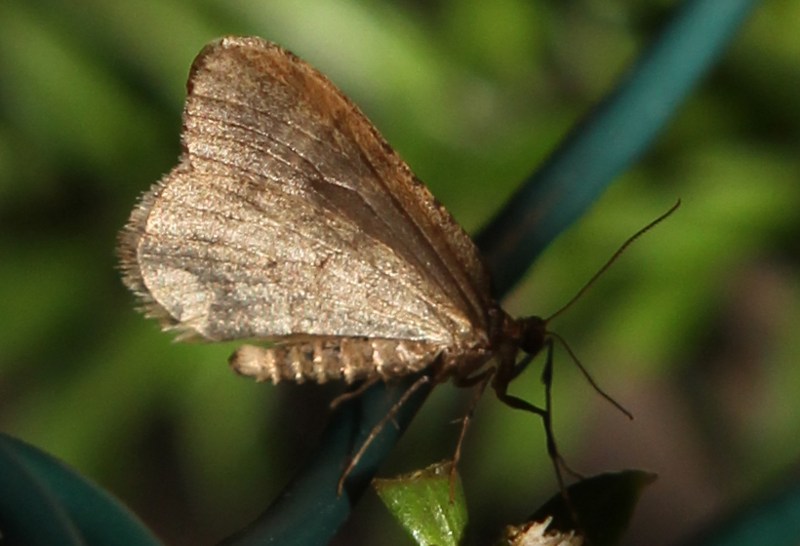Heavy fog rolled into Boston on the evening of Thursday, December 5. A thick blanket of darkness lay over Jamaica Pond.

Unusual warmth accompanied the fog, and winter moths (Operophtera brumata) were out in force. I saw one on a shrub covered in Christmas lights.

It was the second day this year I had noticed these moths. The first, November 27, was also unusually warm (62°F/17°C) after a low temperature the previous day of 32°F/0°C, bringing with it heavy rain. December 5 followed that pattern, warm (57°F/14°C) after a low the previous day of 35°F/2°C, with some rain.
Winter moths are native to Europe. Lacking natural predators, their numbers have exploded in Massachusetts, to an estimated one trillion in 2011. They are one of the few insects that can be seen in winter, even after a few days of sharp freezes.

The moths in flight are all males, looking for mates. Female winter moths have tiny, vestigial wings. They climb trees or other objects and release pheremones, which the males use to find them.

Joe Elkinton, a professor at UMass-Amherst, has brought a parasitic fly to the state to help control the winter moth population. The fly, Cyzenis albicans, preys only on winter moths and has been effective in Nova Scotia and British Columbia. The fly now has an established population in Massachusetts. If all goes according to plan, we will see only a small population of both the fly and the moth in the future.

More information on winter moths: UMass Extension.